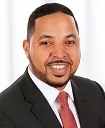The City of Philadelphia recently signed into law Bill no. 20030301 (Ordinance), which amends Chapter 9-4100 of The Philadelphia Code to provide expanded public health emergency leave protections to all employees in the city. The Ordinance went into effect on September 17, 2020, and will sunset on December 31, 2020. Generally, the Ordinance provides paid sick leave to healthcare workers, gig workers, contract workers, and workers of employers with more than 500 employees.
Under the Ordinance, covered individuals who work 40 hours a week or more are entitled to 80 hours of leave or an amount equal to their average hours worked over a two-week period, whichever is greater but not to exceed 112 hours of leave. Covered individuals who work fewer than 40 hours a week can take an amount of leave equal to the average amount of hours they worked in a 14-day period.
The Ordinance covers all employees who perform at least 40 hours of work in the City of Philadelphia in a year for one or more hiring entities. The "hiring entities" provision is intended to apply to gig workers and individuals who work for various employers.
The Ordinance provides leave to covered individuals who are not otherwise eligible for leave under other federal, state, and local laws, including those exempted from the Families First Coronavirus Response Act, H.R. 6201, Public Law No. 116-127 (FFCRA), which took effect on April 1, 2020. However, unlike the federal law, no tax credits are available for the paid leave that must be provided under the Ordinance.
Paid emergency leave under the Ordinance is available for immediate use when a covered individual is unable to work due to one or more of the following circumstances:
- The individual is subject to a federal, state, or local quarantine or isolation order related to the public health emergency.
- A health care provider advises the individual to self-quarantine due to concerns related to a public health emergency.
- The individual is experiencing symptoms related to a public health emergency and is seeking a medical diagnosis.
- The individual is caring for a person who is subject to a federal, state, or local quarantine or isolation order related to the public health emergency, or who a health care provider advises self-quarantine due to concerns related to a public health emergency.
- The individual is caring for a child of a covered individual if the child's school or place of care has been closed, or the childcare provider is unavailable due to precautions taken in accordance with the public health emergency response.
- The individual is experiencing any other substantially similar condition, as specified by the United States Secretary of Health and Human Services in consultation with the United States Secretary of the Treasury and the United States Secretary of Labor.
A covered individual may use all or a portion of the paid emergency leave at any time during the public health emergency and for one month following the conclusion of the emergency. There is no requirement that employers change existing policies or provide additional paid leave if the existing amount of paid sick leave meets or exceeds the amounts required by the Ordinance. However, this is a good opportunity for employers to review and revise paid sick leave policies to ensure compliance with the law.
The content of this article is intended to provide a general guide to the subject matter. Specialist advice should be sought about your specific circumstances.


